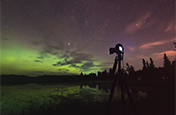Make underwater photography a part of your world.
Capture underwater images beneath the waves. This is how to photograph marine life, coral reefs and adventurous humans under the sea.
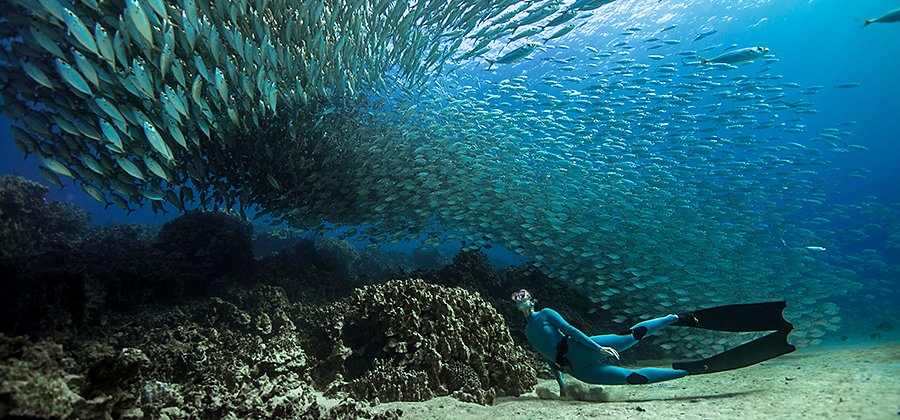
Image by Jim and Alicia Ward
What is underwater photography?
Underwater photography is a world of possibility, from coral reefs off the coast of Indonesia to sharks swimming in the clear waters of the Bahamas to scuba divers encountering manta rays.
Nature photos are just the beginning, though. “Underwater photography isn’t just about taking pictures of fish and reefs and sharks and dolphins,” says photographer Joseph Esser. “There are many more different avenues.” Esser specialises in underwater wedding photography. His photos often depict couples in their wedding clothes, submerged or floating in a tropical, sun-filled sea with their clothes billowing around them.
“It’s not just taking pictures of wildlife any more,” says Esser. “It’s people. It’s mermaid costumes. It’s bikinis. It’s models and couples.”
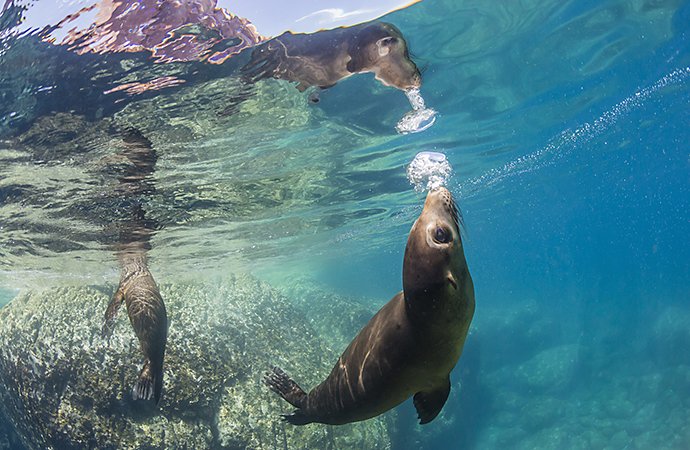
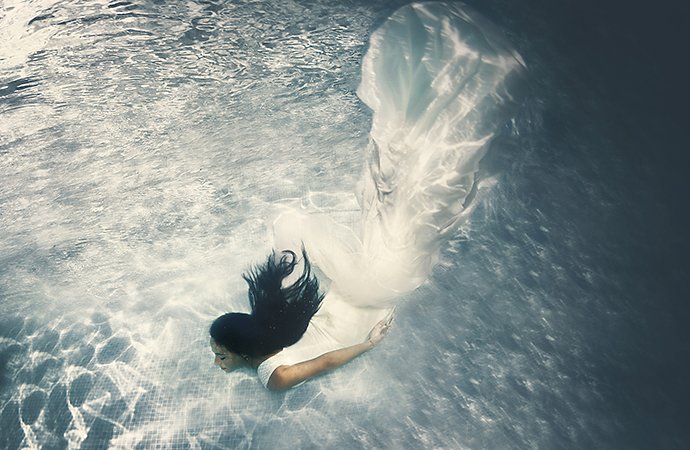
Staying safe with underwater photography.
Safety is the most important thing to keep in mind for an underwater photographer. “If you’re swimming in a pool, that requires a different set of skills than swimming in an ocean,” says Esser. “A lot of what we do is free swimming or free diving. You have to have a basic comfortability with your own skills.” Even swimming or snorkeling in shallow water can present certain challenges, so make sure that you be comfortable with your environment before diving in.
Even on the calmest day, the chance of something going wrong in the ocean is never totally zero. Underwater photographers who take pictures of people should always get their subjects to sign liability waivers prior to a shoot.
Concern for safety also includes the safety of the animals and environment you’re photographing. Underwater photographers have to know about the animals that they’re documenting and recognise signs of fear or stress. Those signs might not always be obvious. “Pilot whales will flex their pectoral fins at you. Dolphins will blow bubbles,” says Alicia Ward, who, along with her partner, Jim, takes pictures of underwater wildlife. “People will think, ‘Oh, it’s waving at me,’ or, ‘It’s blowing bubbles,’ but these are signs of distress.”
Respect the sea life and critters around you and make sure the fish and coral are just as beautiful when you leave as when you found them. “If you can’t walk away from an exchange feeling like you didn’t stress out an animal, you shouldn’t have taken the photo,” says Jim Ward.

The right gear for underwater photography.
Both underwater photographers and their cameras need to be outfitted with the right gear for a photoshoot. “I usually have a pair of fins and a nice mask that isn’t going to fog up,” says Esser. “I use a DSLR camera with underwater housing that allows me to shoot with full access to my controls.”
Every camera is an underwater camera once you give it the right housing. Underwater housings can be either buoyant or non-buoyant, depending on the needs of the shoot. If you’re in shallow water and want to bob near the surface, buoyant housing is the way to go. If you’re scuba diving into the depths and need your camera to sink, you’ll want the non-buoyant type.
Some cameras, like GoPros and newer iPhones, are waterproof to a certain depth. These digital cameras take excellent photos, but they are not as flexible or as powerful as a DSLR from an established manufacturer, like Canon, Nikon or Sony. And most professional photographers will want more than what even the best point-and-shoot can offer.
Probably the most important gear you can have, though, is just above the water. If you’re far away from dry land, make sure that you have someone else on a boat just above you in case the tide turns and you need an assist.
Underwater photography tips.
Shooting under water means you have to take into consideration a whole new set of variables. Atmospheric conditions under water are going to dictate the clarity of your image. On a calm day with clear water, you’ll be able to get good wide-angle shots of your underwater subjects. But if you’re shooting in low light or there’s a lot of sediment, you’re going to have to get closer to your subject.
Strobes and other light sources can be helpful, but they are also very situational. “There are instances where having strobes has been helpful,” says Alicia Ward. “Like diving at night or deepwater diving.” Strobes, though, are one more piece of electronic equipment you’ll have to waterproof. Additional light sources also open up the potential for backscatter — that is, particles that reflect light back to the source. Be mindful of your conditions before you decide to use lighting. If you’re shooting during the day or close to the surface, try to pack lightly and rely on natural light as much as possible.
If you are using natural, ambient light, different times of day will present different opportunities. “The best light for us is similar to that on land,” says Alicia Ward. “In early morning or late afternoon, you get that golden light that comes from the side.”
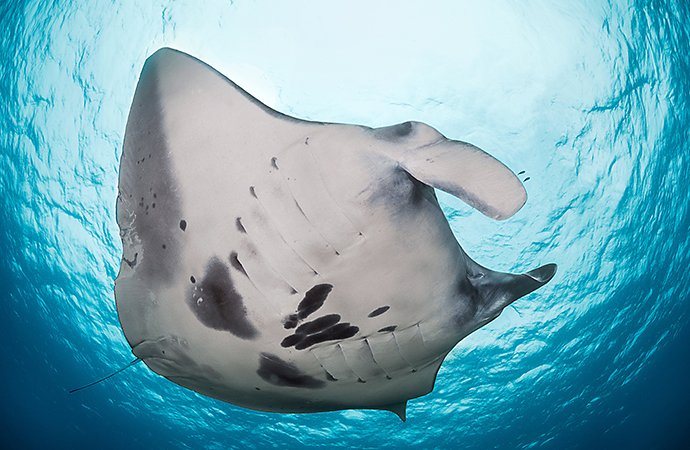
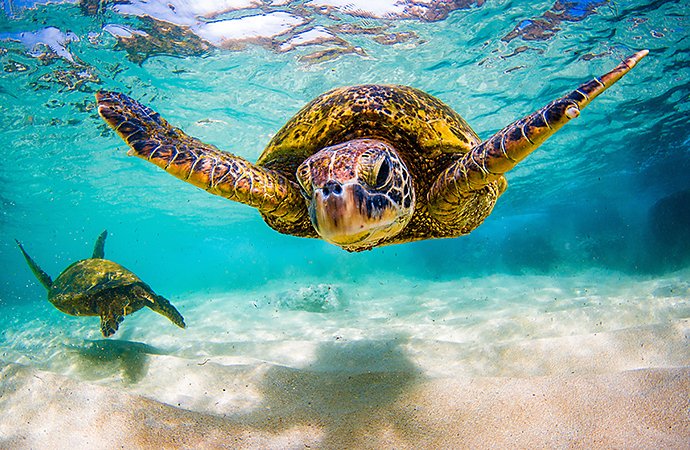
A wide-angle lens or fish-eye lens is often your best bet for getting pictures of sea life. Aquatic animals won’t hold still for your shot, so take as many as possible, shoot quickly and worry about composition in post-production. With a wide-angle lens, you’re more likely to capture that colourful fish or fleeting manta ray somewhere in the frame. Crop your images and make them adhere to the rule of thirds when you’re on dry land and editing in Adobe Photoshop Lightroom.
Try a fast shutter speed and high ISO.
Shooting quick and wide also means having a fast shutter speed and high ISO to avoid motion blur. Esser recommends an ISO of around 500.
Autofocus could get your camera trained on bubbles or rocks, leaving that jellyfish you wanted to photograph as just a blurred thing in the background.
Get your settings in order above the water.
Lastly, set up everything you need before going beneath the waves. “Make sure you set up everything before you get in the water,” says Esser. You don’t want to have to adjust your camera settings when you’re below the surface.
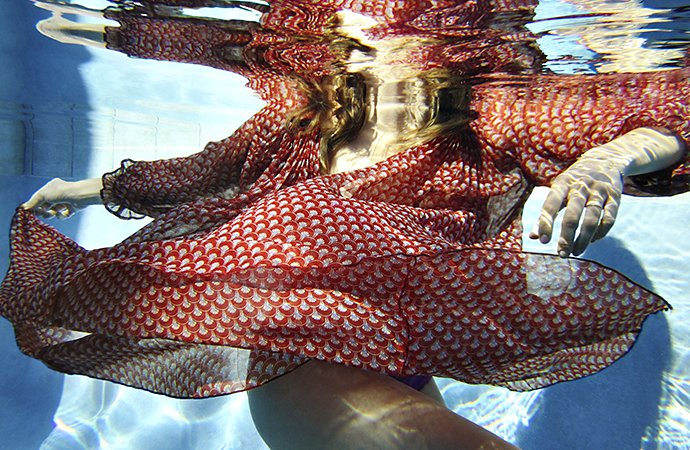

Becoming an underwater photographer.
Underwater photography can be a major opportunity for professional photographers. Being able to take your camera into the watery part of the world makes you a more flexible and adventurous photographer; it’s a great way to improve your skills in general. If you can photograph sharks and manta rays, you can definitely do weddings. If you can colour-correct for briny depths, you can probably manage the white balance on a headshot. “Get creative, have fun,” says Esser. “There’s no real wrong way to do it and the more you shoot in the water, the better you get.”
Contributors
Do more with Adobe Photoshop Lightroom.
Edit photos easily with Lightroom presets, Super Resolution, easily share photos from any device and access your projects anywhere with cloud photo storage management.
You might also be interested in…
Building a great landscape photo.
Explore ways to artistically capture scenic views with tips on landscape photography.
Architecture photography, inside and out.
Learn basics tips for photographing the interiors and exteriors of buildings big and small.
An introduction to documentary photography.
Document major events and capture of everyday life in a mixture of fine art and photojournalism.
Discover the ins and outs of capturing stunning images of the night sky.



